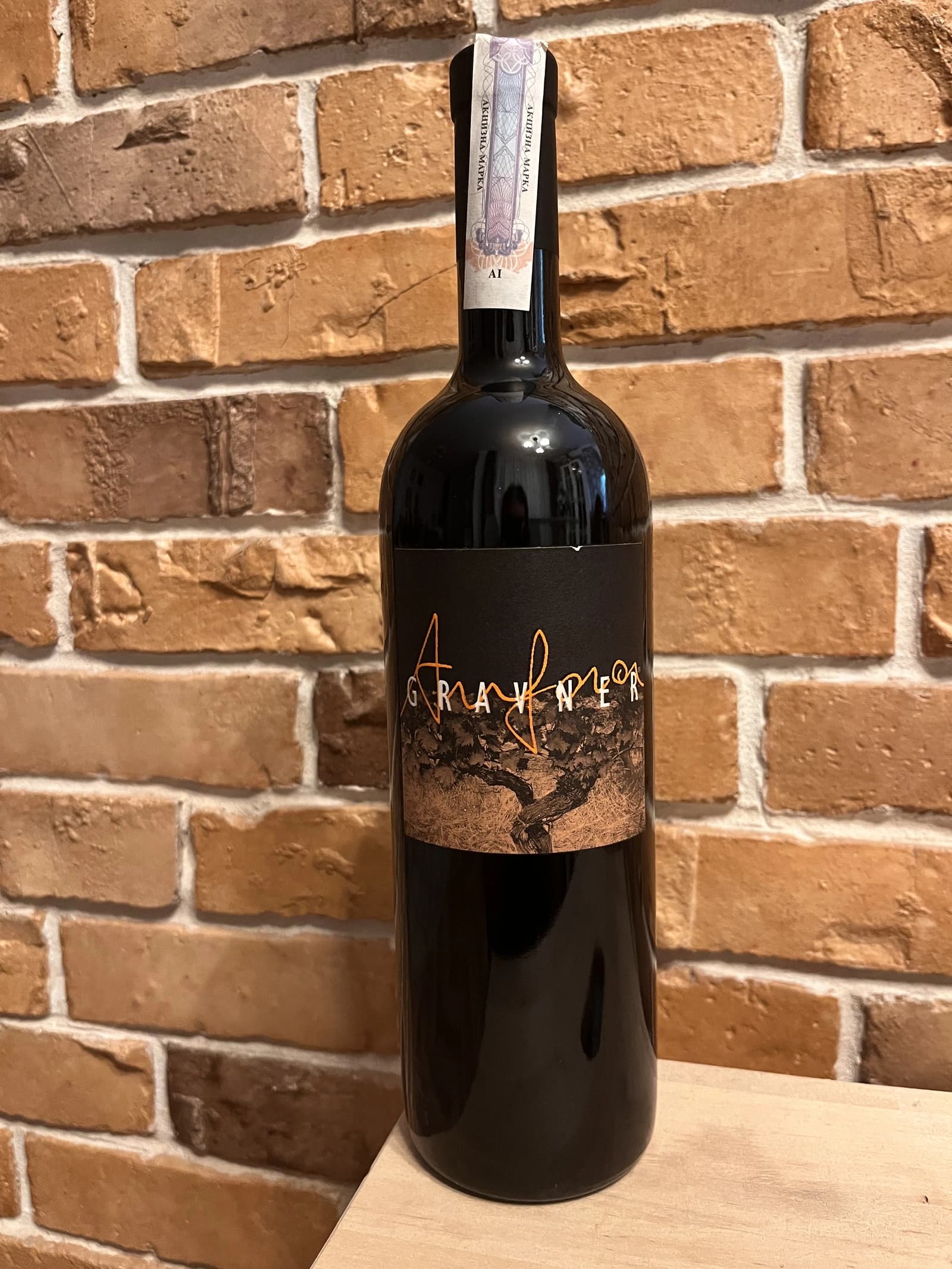Gravner Ribolla Anfora 2004
- Region
- Italy » Friuli-Venezia Giulia » IGP Venezia Giulia
- Type
- white still, dry
- Producer
- Vintage
- 2004
- Grapes
- Ribolla Gialla
- Alcohol
- 12.5
- Sugar
- 3
- Volume
- 750 mL
- Cellar
- not available

Ratings
This wine is something. I have little to add to my previous review. While some people do not enjoy this type of aroma, I do love all these mouldy-mushroomy notes in my wine. Combine them with 5+ years old pressed Bai Mudan, (burnt) caramel, honey and dried herbs. The fruit is dead, boys, and it's so lonely on a limb.
Complex, demanding and close to (or even over) the peak. Definitely not for everyone, but hear, hear! Some loved it. And as a host, this warms my heart.
Initially, I was slightly puzzled by the restrained bouquet. But the more time I spent with this wine, the more I fell in love.
Deep cognac-like colour. A beautiful bouquet of mushrooms, burnt caramel, dried medicinal herbs, honey and mould. But boy, when you taste it! This is where it really shines!
The wine fills more than just mouth. My whole head becomes full of it. Perfectly balanced, it is generous and prolonged. It's incredible how the taste evolves and fades over a long time, leaving me in shock. Wonderful sensation. The acidity is still good; tannin is at a respectable age. It feels like the wine reached its peak.
Complex and delicious Ribolla. This bottle needs to be enjoyed in a comfortable chair by the fire. Meditative wine.
Well crafted skin contact wine that spent quite some time in qvevri. I definitely like 2004 more than 2010 for being deeper, more interesting and less straight-forward. Deep amber colour. Complex, beautiful bouquet: old apricot jam, caramel, tea, medicinal herbs. Medium-full bodied, fresh with medium-high round tannin, Very long, evolving and flavourful aftertaste - caramel, nuts and condensed milk.
About Producer
Joško Gravner, often regarded as the father of the macerated white wine trend, has had an unexpected and fascinating journey in winemaking. Based in Oslavia, a small village in the Friuli-Venezia Giulia region of northeastern Italy, Gravner's winery is situated in the Collio appellation, a region renowned for its high-quality white wines.
Initially celebrated for his modern, technologically driven approach, Gravner was enthusiastic about the latest equipment and techniques. However, a transformative trip to California in 1987, a region still basking in the glory of its 1976 Judgment of Paris triumph, sparked a radical shift in his winemaking philosophy. Despite California's innovative reputation, Gravner became disillusioned after tasting 1,000 wines in just ten days, finding them uniform and lacking character.
Embarking on a nearly decade-long quest for authenticity, Gravner immersed himself in the history of winemaking. He found a connection to his roots in Collio/Brda, where his ancestors had produced skin-contact wines. This region, straddling the Italian-Slovenian border, has a long tradition of winemaking that dates back to the Roman Empire. His research also led him to Georgia, known for its 8,000-year-old winemaking traditions, including the use of skin-contact methods in large earthenware vessels called qvevri.
In 1996, a devastating hailstorm destroyed most of the yields, resulting in no wine release that year. This disaster, however, provided Gravner with an opportunity to experiment with maceration. Encouraged by these experiments, he decided to release his first extensively macerated white wine in 1997. This vintage took three long years to mature and, when released, it faced a chilly reception; the radical departure in style was too much for many. Notably, Gambero Rosso, a prestigious wine magazine, issued a scathing critique. The fallout was severe, with 80% of the vintage returned. Despite this setback, Gravner's conviction in his new direction only strengthened.
The year 2000 marked another significant milestone for Gravner. He travelled to Georgia and ordered 11 qvevri, large 1000L ceramic vessels. However, the transportation challenge was underestimated, and only two qvevri survived the journey to Italy, causing another year's delay before he could fully implement his vision. Today, Gravner's winery boasts over 45 qvevri, meaning the transportation complexities were figured out.
Interestingly, the labels of Gravner's Ribolla and Breg in the 2001 vintage bore the word 'Anfora', indicating partial use of qvevri. It wasn't until 2003 that these wines were completely fermented in qvevri. Recognizing the full transition, 'Anfora' was removed from the labels in 2007, as all wines were now qvevri-fermented.
Today, Joško Gravner's wines are celebrated as benchmarks of craftsmanship in the wine world. His Ribolla is often acclaimed as the best orange wine globally. Gravner's journey from a tech-forward approach to embracing ancient winemaking traditions not only transformed his wines but also made a lasting impact on the industry.